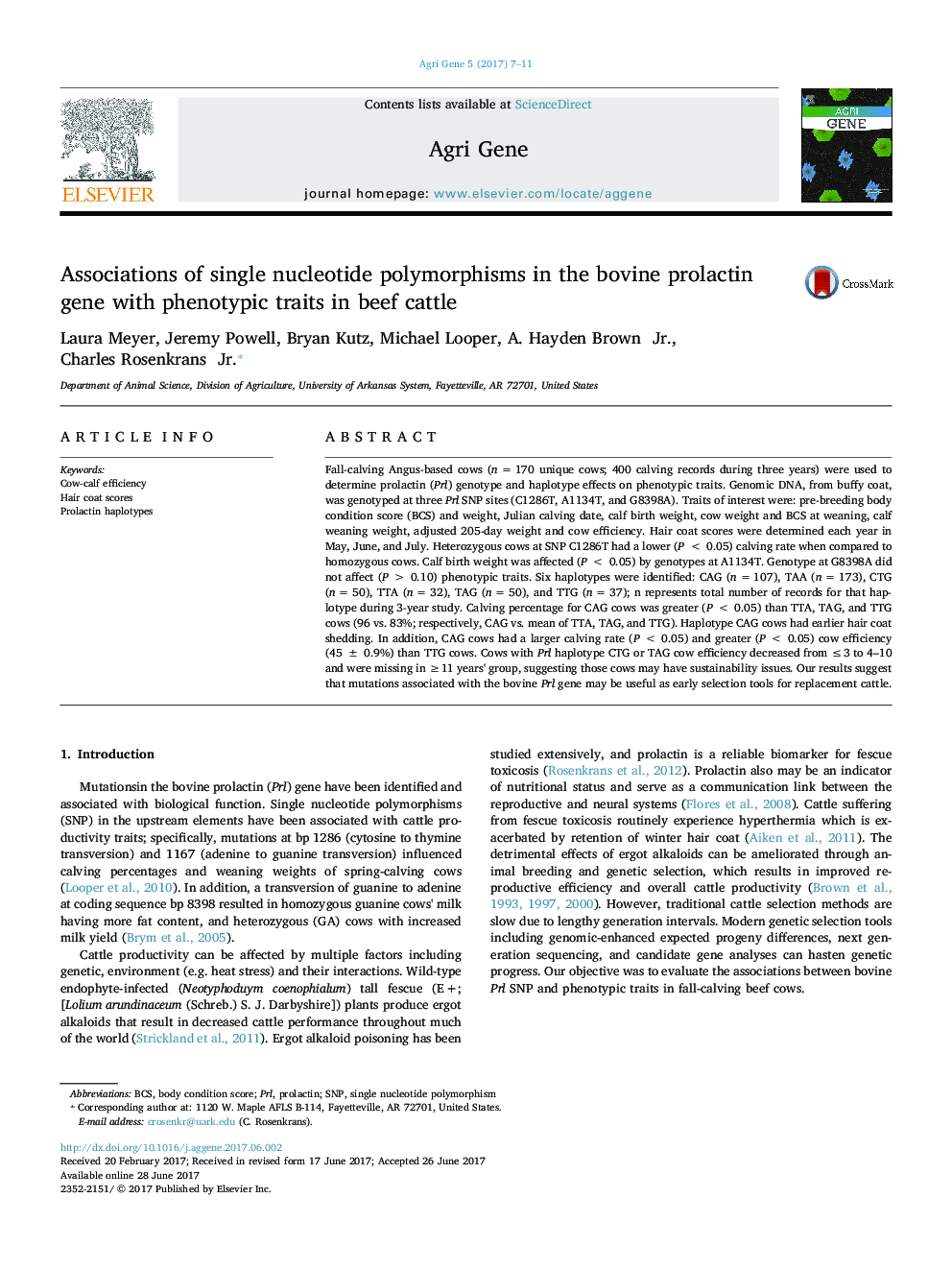| Article ID | Journal | Published Year | Pages | File Type |
|---|---|---|---|---|
| 5588903 | Agri Gene | 2017 | 5 Pages |
Abstract
Fall-calving Angus-based cows (n = 170 unique cows; 400 calving records during three years) were used to determine prolactin (Prl) genotype and haplotype effects on phenotypic traits. Genomic DNA, from buffy coat, was genotyped at three Prl SNP sites (C1286T, A1134T, and G8398A). Traits of interest were: pre-breeding body condition score (BCS) and weight, Julian calving date, calf birth weight, cow weight and BCS at weaning, calf weaning weight, adjusted 205-day weight and cow efficiency. Hair coat scores were determined each year in May, June, and July. Heterozygous cows at SNP C1286T had a lower (P < 0.05) calving rate when compared to homozygous cows. Calf birth weight was affected (P < 0.05) by genotypes at A1134T. Genotype at G8398A did not affect (P > 0.10) phenotypic traits. Six haplotypes were identified: CAG (n = 107), TAA (n = 173), CTG (n = 50), TTA (n = 32), TAG (n = 50), and TTG (n = 37); n represents total number of records for that haplotype during 3-year study. Calving percentage for CAG cows was greater (P < 0.05) than TTA, TAG, and TTG cows (96 vs. 83%; respectively, CAG vs. mean of TTA, TAG, and TTG). Haplotype CAG cows had earlier hair coat shedding. In addition, CAG cows had a larger calving rate (P < 0.05) and greater (P < 0.05) cow efficiency (45 ± 0.9%) than TTG cows. Cows with Prl haplotype CTG or TAG cow efficiency decreased from â¤Â 3 to 4-10 and were missing in â¥Â 11 years' group, suggesting those cows may have sustainability issues. Our results suggest that mutations associated with the bovine Prl gene may be useful as early selection tools for replacement cattle.
Related Topics
Life Sciences
Agricultural and Biological Sciences
Animal Science and Zoology
Authors
Laura Meyer, Jeremy Powell, Bryan Kutz, Michael Looper, A. Hayden Jr., Charles Jr.,
